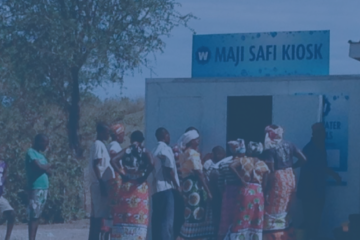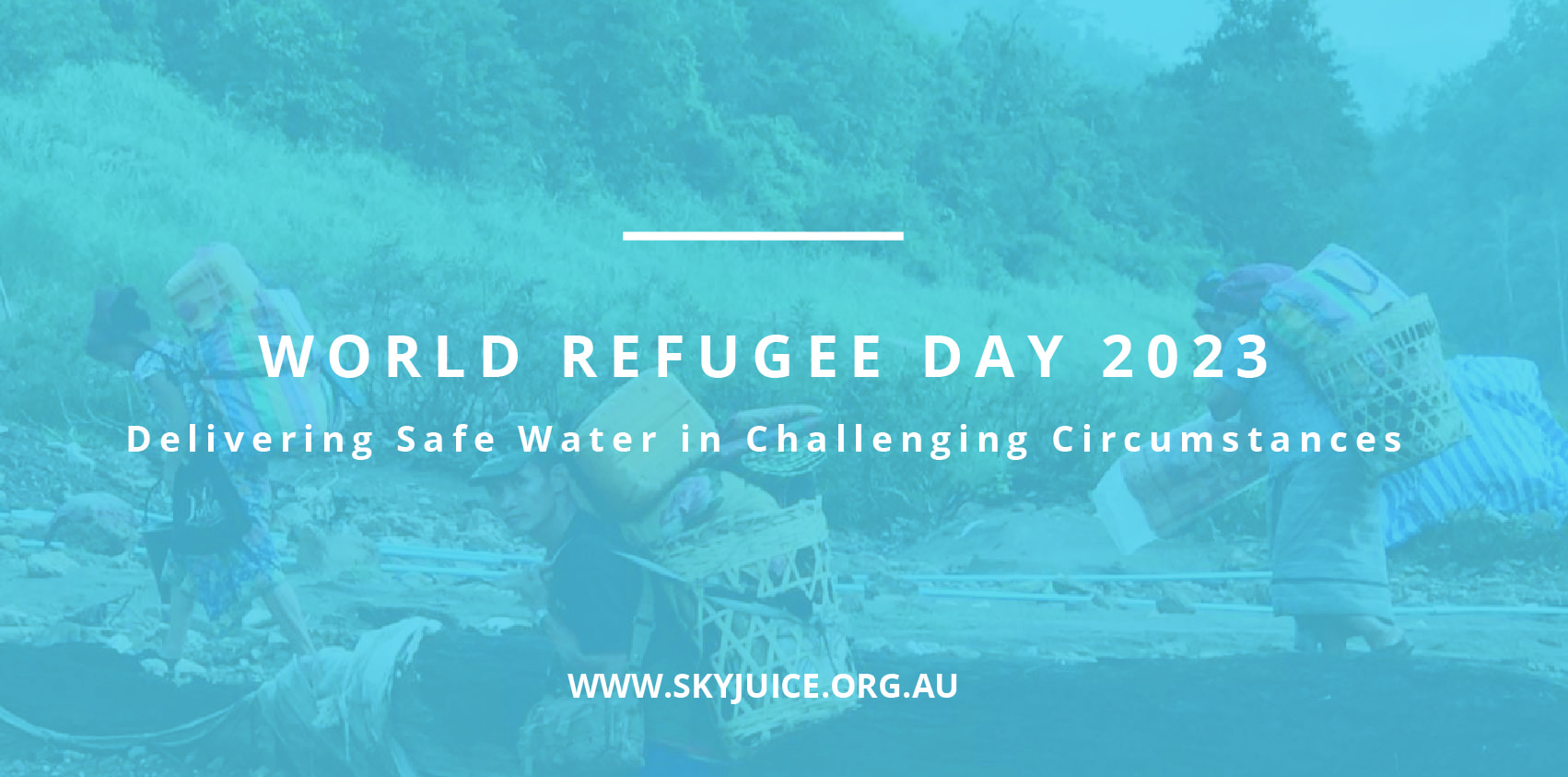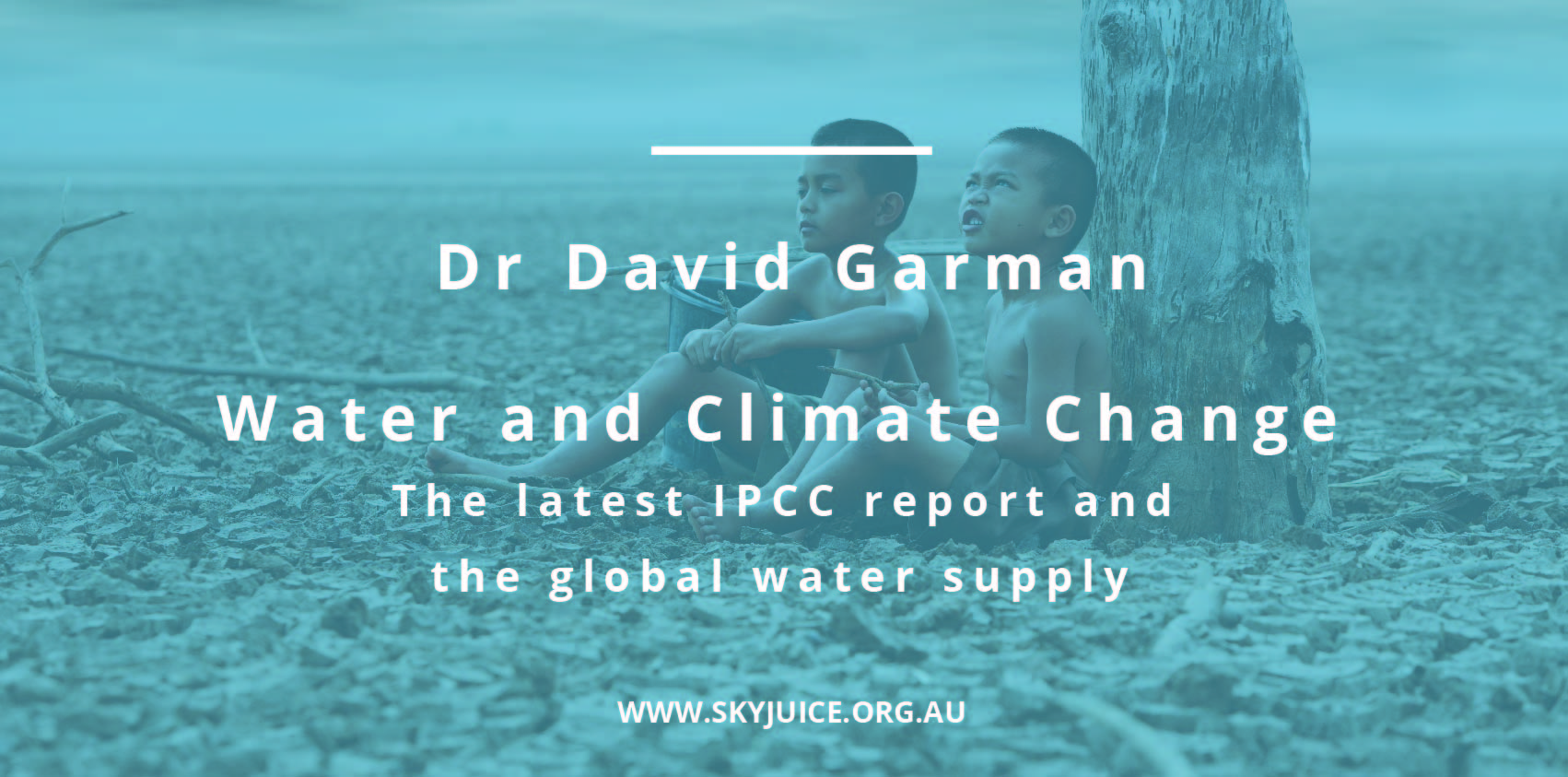We have summarised some of the latest World Water Facts relating to the impact of water and humanitarian relief.
The issues remain challenging, complex, and difficult to solve. The positive news is that many organisations, groups, and individuals are focused on solving these problems. SkyJuice is one such organisation. Our vision is ‘Safe Water For Every Child’. Help us by sharing this article on social media. When more people are aware of the facts, greater support can be gathered to solve the greater problem. Find out how you can support us.
World Water Facts – Access to safe drinking water
Fact 1
At least 1.8 billion people worldwide are estimated to drink faecally contaminated water. An even greater number drink water delivered through a system without adequate protection against sanitary hazards. Source: WHO/UNICEF Joint Monitoring Programme for Water Supply and Sanitation
Fact 2
Seven hundred sixty-eight million people do not use an improved source of drinking water, and 2.5 billion people do not use improved sanitation as of 2011. Source: Joint Monitoring Programme (JMP), 2013
Fact 3
Almost 900 million people worldwide do not have access to clean, safe drinking water, while 2.6 billion live without basic sanitation. Across the globe, more than 6,000 people die each day from diseases caused by dirty water. Most disturbingly, two-thirds are children—source: Oxfam Australia.
Fact 4
1 in 9 people worldwide do not have access to improved sources of drinking water. Source: UN Water Quality Fact Sheet 2013.
Fact 5
Over 8 out of 10 people who do not use an improved source of drinking water live in rural areas. Source: Joint Monitoring Programme (JMP), 2013
Our input: Statistics are collated from many different organisations around the world. Many of the figures are qualitative, as it is very difficult to get actual numbers on the ground. That is why you often see different figures quoted. The main take-home message is that many people globally still do not have clean, safe drinking water. This has enormous ramifications for health, education and social equity. We aim to reduce the number of people impacted by water-related illnesses worldwide via our vision for ‘Safe Water for Every Child’. Find out more about the SkyJuice Foundation.
World Water Facts – Water is the primary medium of life on earth
Fact 6
Water is a primary medium that impacts human activity and the climate impact the earth’s surface. It influences ecosystems, people and society. Through water and its quality, people will most strongly feel the effect of change. Source: World Water Development Report 2012
Our input: This basically means that the currently evidenced changes in climate and human activity impact the earth’s surface, ecosystems, and people. There are consequences, and we are seeing impacts on water, its quality, and availability.
World Water Facts – Population growth and water stress
Fact 7
In 2030, 47% of the world’s population will live in areas of high water stress. Most population growth will occur in developing countries, mainly in regions already experiencing water stress. Those areas have limited access to safe drinking water and adequate sanitation facilities. Source: World Water Development Report 2012
Fact 8
Approximately 827.6 million people live in slums, often lacking adequate drinking water and sanitation services. Slums are projected to grow by 27 million people per year. In Africa and Asia, the urban population will double between 2000 and 2030. Source: UN-HABITAT
Fact 9
Collecting water is expected to become increasingly burdensome with global warming. More regions will experience water shortages as rainfall becomes erratic, glaciers melt, and sea levels rise. People living within 100 kilometres of a shoreline, one full third of the world’s population, will be hit especially hard. These are the persons most susceptible to increased salinity of coastal potable water sources. As it takes more time to gather water and fuel, the available time for education or other economic and political activities decreases. The majority of children worldwide who do not attend school are girls. Source: UN Women.
Fact 10
The UN suggests that each person needs 20-50 litres of water daily to ensure their essential drinking, cooking and cleaning needs. Source: World Water Assessment Programme (WWAP)
Fact 11
Between 1990 and 20112.1 billion people gained access to improved sources of drinking water. Over 70% of the global progress was achieved through access to piped drinking water. It was reported that 1.2 billion people were in the urban areas of the developing world, but due to the urban population growth, the percentage gain was only 2% between 1990 and 2011. Source: Joint Monitoring Programme (JMP), 2013
Fact 12
Because of urban population growth, the number of people in urban areas without improved sanitation increased by 196 million between 1990 and 2011. Source: Joint Monitoring Programme (JMP), 2013.
Fact 13
Only 47% of the rural population uses improved sanitation, far behind urban areas, where the rate is 80%. Seven out of ten people without improved sanitation live in rural areas. Source: Joint Monitoring Programme (JMP), 2013.
Fact 14
There are 276 Transboundary River Basins worldwide, and 200 Transboundary aquifers have also been identified. Between 1820 and 2007, almost 450 agreements on international waters were signed. Source: UN Transboundary Waters Fact Sheet 2013.
Fact 15
The industrial and domestic sectors account for 20% and 10% of global water use. These figures vary considerably across countries. Agriculture accounts for over 90% of water withdrawals in most of the world’s least-developed countries. Rain-fed agriculture is the predominant agricultural production system across the globe. Current productivity is, on average, little more than 1/2 the potential obtainable under optimal agricultural management. Without improved efficiencies, agricultural water consumption is expected to increase globally by about 20% by 2050. Source: World Water Development Report 2014
Fact 16
Part of the current pressure on water resources comes from increasing demands for animal feed requirements. Meat production requires 8-10 times more water than cereal production—source: World Water Development Report 2012.
Fact 17
Water use has been growing at more than twice the rate of population increase in the last century—source: UN Water Scarcity Fact Sheet 2013.
Our input: There is no doubt that water related problems are going to get more difficult with increased population growth and climate change. Solutions must be simple to implement, economical and focused at the community level. The SkyJuiceTM Foundation offers this solution. Find out more about us.
World Water Facts – Water quality driven illness
Fact 18
Globally, diarrhoea is the leading cause of illness and death. It is reported that 88 per cent of diarrhoeal deaths are due to a lack of access to sanitation facilities, inadequate hygiene water, and unsafe drinking water (source: Joint Monitoring Programme (JMP), 2013).
Fact 19
In Sub-Saharan Africa, treating diarrhoea consumes 12 per cent of the health budget. On a typical day, more than half the hospital beds are occupied by patients suffering from faecal-related diseases. Source: Water Supply and Sanitation Collaborative Council (WSSCC)
Fact 20
It is reported that the number of cholera cases for the decade 2000–2010 increased by 130 %. The likely risk from cholera will likely increase worldwide due to the growing populations living in peri-urban slums and refugee camps, as well as increasing numbers of people exposed to the impacts of humanitarian crises. Source: World Water Development Report 2012
Our input: Water-related diseases significantly affect health and economic and social costs. Solutions to provide safe, clean water are needed at an enormous scale but must be integrated at the community level. The SkyJuiceTM Foundation offers this solution. Find out more about us.
World Water Facts – Water impacts on women
Fact 21
In African countries, 90% of the work of gathering water and wood is done by women—source: UN-Water and Gender Fact Sheet.
Fact 22
Also, in African countries, women and girls often spend up to 6 hours per day fetching water—source: UN-Water and Gender Fact Sheet.
Fact 23
Reducing the distance to the water source from 30 to 15 minutes increased girls’ school attendance by 12%—Source: A Study in Tanzania quoted in the UN-Water and Gender Fact Sheet.
Fact 24
Involving women in water projects can increase their effectiveness by 6-7 times—source: UN-Water and Gender Fact Sheet.
Fact 25
If women had the same access to productive resources as men, including water, women could increase farm yields by 20-30% and lift 150 million people out of hunger—source: UN-Water and Gender Fact Sheet.
Our input: Women and children are at the most significant risk from the water crisis, but solutions also mean they have the most to gain. Projects that provide safe, clean drinking water for communities have massive improvements in women’s and children’s quality of life, such as more time spent growing nutritious food and healthy children being able to attend school. The SkyJuiceTM Foundation projects have shown these positive outcomes.
World Water Facts – Water pollution
Fact 26
The significant sources of water pollution are from human settlements and industrial & agricultural activities—source: UN Water Quality Fact Sheet 2013.
Fact 27
Nitrate from agriculture is the most common nutrient contaminant in the world’s groundwater aquifers—source: UN Water Quality Fact Sheet 2013.
Fact 28
It is estimated that 80% of sewage in developing countries is discharged untreated directly to water bodies—source: UN Water Quality Fact Sheet 2013.
Fact 29
It is estimated that globally, Industry dumps 300-400 megatons of polluted waste into the waters every year. Source: UN Water Quality Fact Sheet 2013.
Our input: In addition to providing solutions at the end of the water systems to make water quality suitable for human consumption and use, significant changes need to be made to address the input of pollutants into water bodies. The SkyJuiceTM Foundation works with NGOs on the ground to identify suitable water sources for installing water filtration systems. Find out more about partners and projects.
World Water Facts – Deaths due to water supply, sanitation and hygiene
Fact 30
Approximately 3.5 million people die yearly due to inadequate water supply, sanitation and hygiene—source: UN Water Quality Fact Sheet 2013.
Our input: We aim to reduce the number of people who die each year due to water-related illnesses. You can support us by sharing this article on social media – the more people who know the facts, the more help we will get. For more ideas on how to help, visit our Support Us page.


